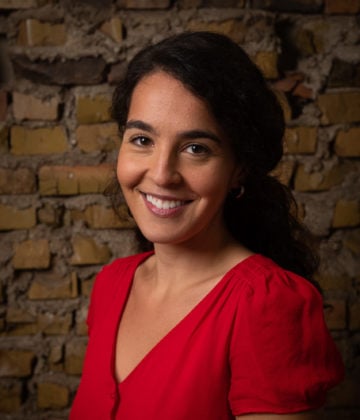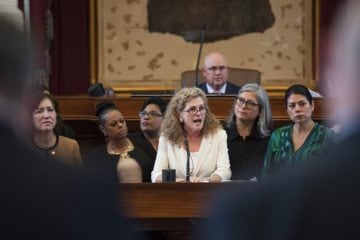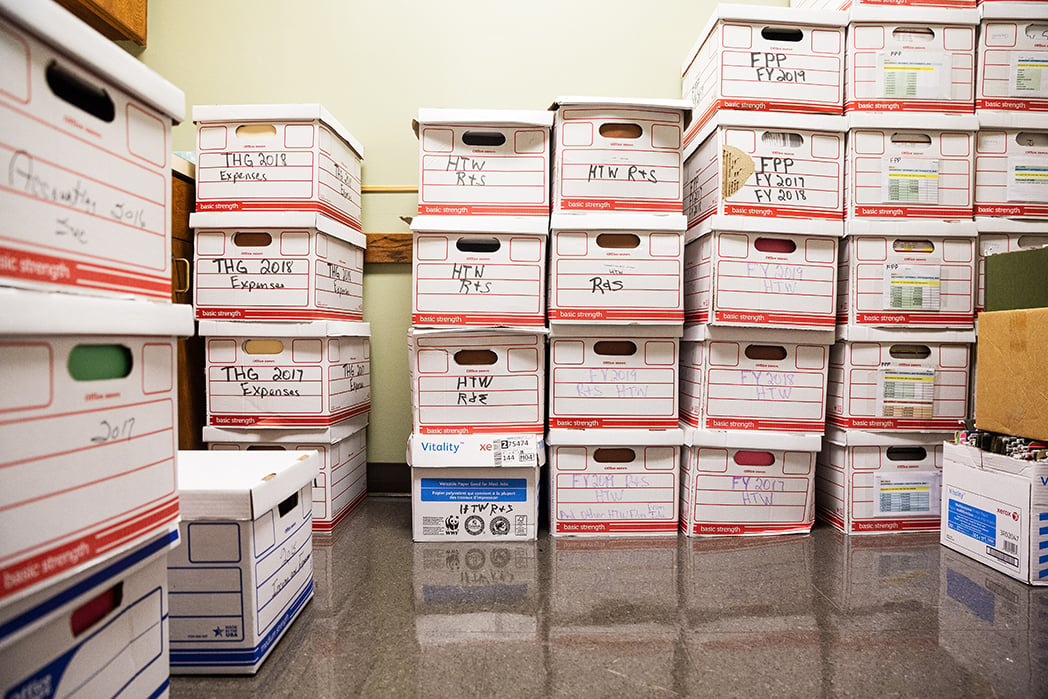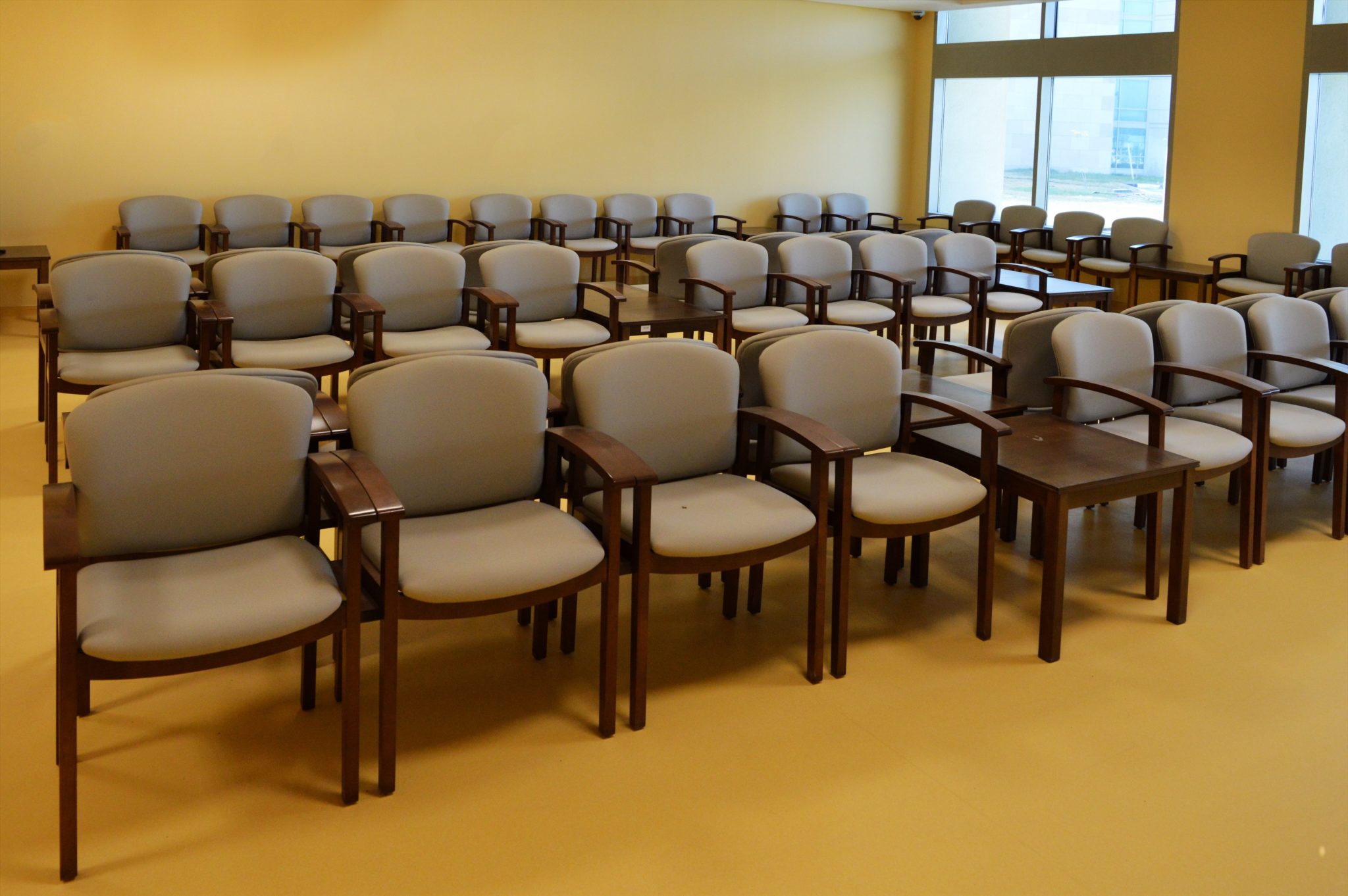
Without Planned Parenthood, Almost Half the Providers in Texas’ Women’s Health Program Saw No Patients
Women’s health advocates say the high percentage of providers seeing few, if any, clients is “alarming.”

Above: Planned Parenthood supporters rally outside the Texas Capitol in 2017.
For years, the Texas health agency has claimed that its Healthy Texas Women program is thriving. After Planned Parenthood was booted out in 2013, state officials cobbled together a new network of women’s health providers, which they say is robust and growing.
But records obtained by the Observer show that Texas has failed to fill the gap left by Planned Parenthood and other established family planning providers, leaving many women with inadequate access to contraception and preventive screenings.
Almost half of the approximately 5,400 providers in Healthy Texas Women didn’t see a single patient in the program in fiscal year 2017, according to data from the Texas Health and Human Services Commission (HHSC). Of the 2,900 providers that did see patients, more than 700 saw just a single person. Only about 1,500 saw more than five patients. Of the 27 providers that served 1,000 or more, 11 were labs, which don’t actually see patients and advocates say skew the data.
“It’s very difficult to have any kind of trust in these numbers when this is the kind of information that we’re getting.”
Erika Ramirez, a policy and advocacy director at the Texas Women’s Healthcare Coalition who previously worked at HHSC as a senior policy advisor, called the fact that most providers aren’t seeing many clients “alarming.”
“More providers is good, but it’s not enough,” she said. “You need to make sure those providers are actually meeting the demand, actually providing those services. Because if they’re not, then it’s just a number, and women are still not getting the services they need.”
Though the number of providers increased from just over 1,300 in the predecessor program in 2011 to about 5,400 in Healthy Texas Women in 2017, the average number of patients seen by each dropped from 150 to 85 during that time, as the state replaced large providers with small ones.
Meanwhile, less than a quarter of the nearly two million Texas women who need publicly funded contraception and preventive care are getting it — a gap advocates say can’t be filled by providers that see one or two (or zero) patients. Research has found that non-specialty doctors and clinics don’t see as many family planning patients as those dedicated to women’s health, which tend to have personnel with specialized training and a range of contraceptive options. Before it was kicked out, Planned Parenthood served more than 40,000 patients annually in the state’s women’s health program.

“It’s so offensive to me that the Legislature came in to a program that was meeting a need … and we cavalierly, as a body, tore it to shreds,” state Representative Donna Howard, D-Austin, told the Observer. “And we have not been able to rebuild it.”
Agency spokesperson Christine Mann defended the program, which cost $62 million in fiscal year 2017, saying that most Healthy Texas Women providers are fee-for-service and are not required to see a certain number of patients. “HHSC encourages all providers who want to provide women’s health services to enroll as a [Healthy Texas Women] provider, and expects provider participation in the program to grow over time,” Mann wrote in an email. She did not respond to a question about what HHSC is doing to increase network capacity.
Part of the problem is that many of the Healthy Texas Women contractors, which were tasked with helping to build the network and do outreach, fell far short of their goals. Most notable was the Heidi Group, led by an anti-abortion activist, which claimed it would serve more women in its first year in the program than Planned Parenthood had, and received multi-million dollar contracts to do so. HHSC acknowledged the Heidi Group’s failure when it announced on Friday that it would cancel its contracts, two weeks after the Observer reported that the group served less than 5 percent of the women it pledged to in 2017.

Healthy Texas Women has been a frustratingly opaque program. HHSC has been reluctant to share data, despite persistent requests from lawmakers and journalists. For example, it’s impossible to determine with certainty if more, or fewer, women are being served under Healthy Texas Women than before devastating budget cuts in 2011 and Planned Parenthood’s ouster in 2013. HHSC has reorganized the programs and changed how patients are counted by the state. Based on available information, experts say that fewer women are served now than in 2010, even after a documented 30 percent increase last year.
Last year, Howard helped pass a budget rider that directed HHSC to release information in its annual report on the number of clients served by each provider. Howard says the information would help figure out if providers are filling in for Planned Parenthood and whether contractors are meeting their obligations. But HHSC didn’t include the information in its annual report released in May. That month, the Observer requested the data through an open records request, which took the agency four months to fulfill.
Another finding from the data: Providers not affiliated with women’s health are still apparently billing for services through Healthy Texas Women — a problem that Howard has asked the agency to fix. In the data reviewed by the Observer, a few dozen providers, including podiatrists and optometrists, have asked for reimbursements from HHSC for a total of a few thousand dollars. (Mann, the HHSC spokesperson, said that all the providers on the list administered services covered under Healthy Texas Women.)
“There’s a radiology imaging center, there’s Agility Orthopedics and Sports. Really?” Howard laughed. “What do they have to do with family planning, why are they even listed here?” She added: “It’s very difficult to have any kind of trust in these numbers when this is the kind of information that we’re getting.”


